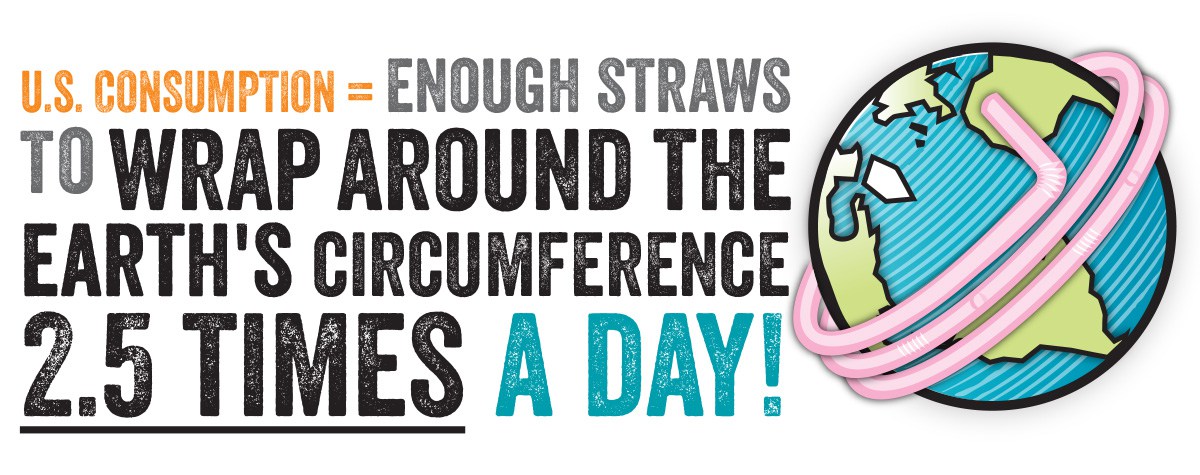The Flaws of Straws

By: Alexandra Mascareno
Have a seat at your favorite restaurant and what do you see? Silverware enveloped in neatly folded linens, a tiny centerpiece with fresh flowers, cute dinner plates and ice cold water. You take a sip and…wait, something’s missing! You take another sip and think about what it could be when finally, it hits you — your straw is missing. More and more these tiny pieces of plastic are disappearing from restaurants around the world.
So, what’s the deal with straws? Well for one, their short usage lifespan may not be worth the strain on the environment. Straws decompose at a rate of 200 years. Meaning it could take upwards of two (really healthy) human lifespans for the Earth to naturally break down a tiny item you use to drink soda. Multiply that by the billions used worldwide each year and you can begin to see how we have a problem to solve.
Drinking tubes have existed for over 7,000 years and across many civilizations. The drinking straw as we know was created only a few decades ago when plastic replaced paper as the material of choice to make these utensils.
The modern drinking straw is made entirely from polypropylene (fancy-speak for plastic) and never truly biodegrades. Instead, plastic straws break down into ever-shrinking pieces until they eventually become ‘microplastics’. These microplastics can make their way into oceans and are ingested by fish and other marine life. According to the 2018 Ocean Conservancy International Coastal Cleanup Report, the total amount of plastic entering the ocean from land is about 8 million metric tons per year, and in 2017 straws were among the top ten plastic items collected globally.
 |
| Image Credit: The Last Plastic Straw |
OK, so how do straws get into the oceans in the first place? Well, disposing of straws can be extremely difficult. When thrown into landfill trash, they are so small and airy that they likely won’t survive the trip. Instead, they often end up in storm drains that connect bodies of water, like oceans. For the same reason, they cannot reliably be recycled in your blue cart.
Now, I know what you’re thinking, “Austin is nowhere near the ocean!” — That’s definitely true, but we do have some beautiful lakes that face the same problems. According to a 2017 study commissioned by Texans for Clean Water, city staff and volunteers pull an average of 250 tons of trash from Lady Bird Lake a year. The majority of which washes in from streets, parking lots and storm drains. Whatever doesn’t end up in our water ends up on our roads. In Texas, more than 70% of roadside trash is microlitter, including straws.
What can you do to help? Well, simply not using single-use plastic straws is a great start! Unless you need to use straws due to a physical condition, we bet you won’t even miss them. If you just can’t seem to live without them, then consider reusable straws made from stainless steel or, for the avocado lovers out there, look for completely biodegradable straws made out of avocado pits. How cool is that?
There are many options out there that could help our planet become a cleaner and safer place for both animals and people alike. Reduce your use of items that see mere minutes of use but have impacts that could last centuries.
So, the next time you are handed a straw at your favorite restaurant, kindly decline or opt to bring along your own reusable straw.

